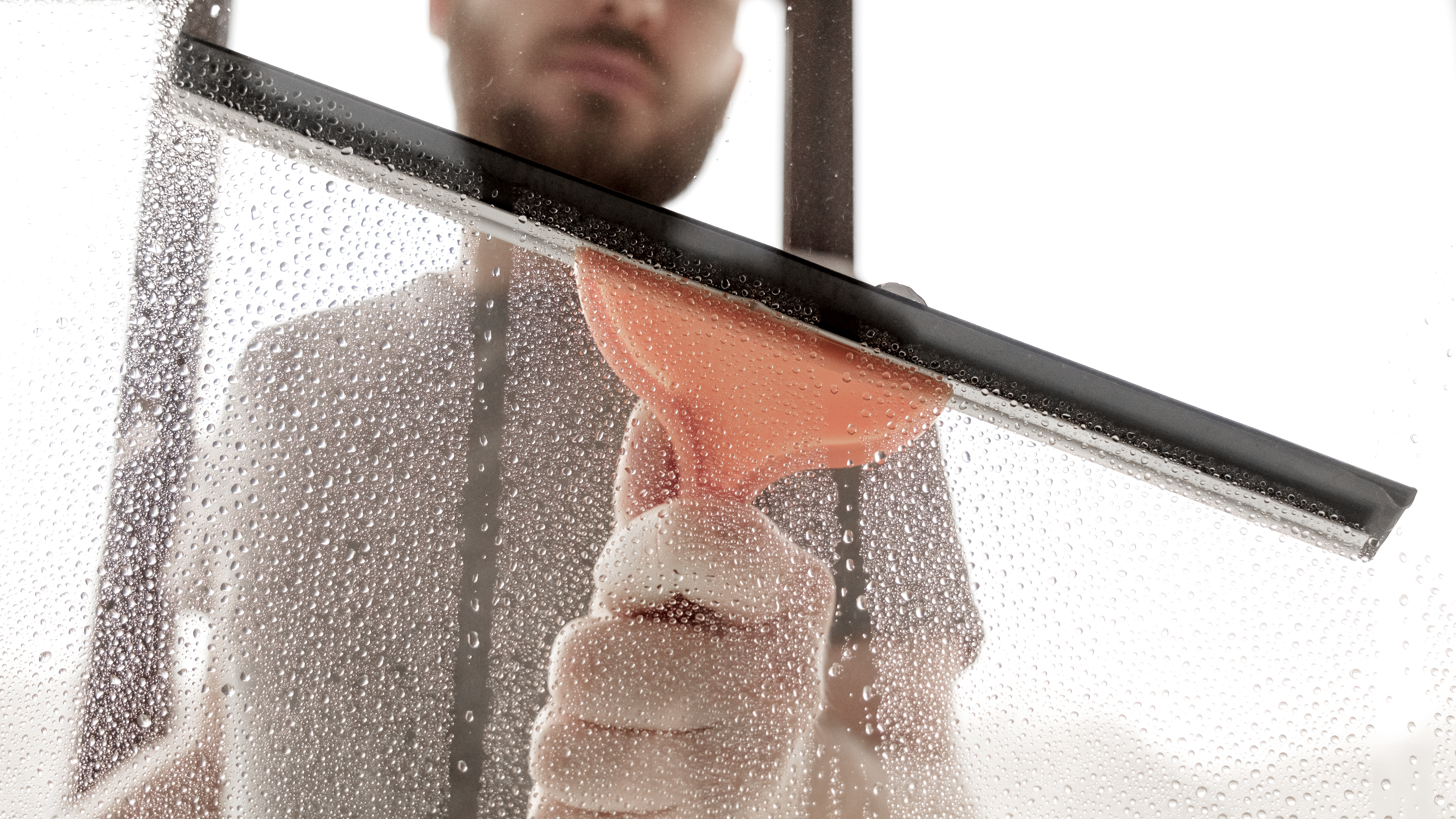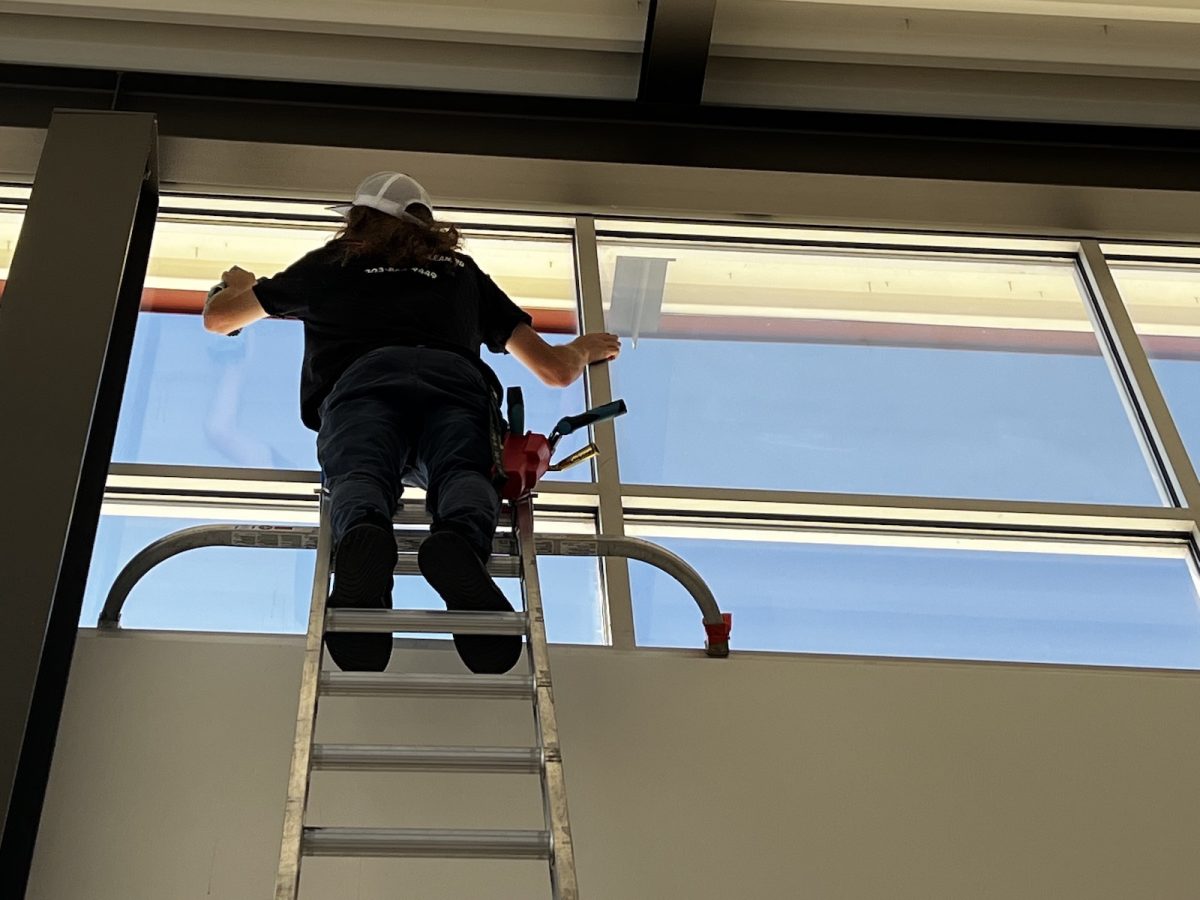The Science Behind Streak-Free Window Cleaning
Sparkling, crystal-clear windows can transform a home, flooding it with natural light and offering unobstructed views of the outside world. But achieving that perfect, streak-free finish often feels like an impossible task. You scrub, you wipe, you polish, only to step back and see a network of frustrating streaks and smudges. What if the secret to pristine windows isn’t just about elbow grease, but about science?
At Dan’s Window Cleaning, we’ve built our reputation on delivering flawless results, and that comes from a deep understanding of the chemistry and physics behind the window cleaning process. This isn’t just about wiping glass; it’s about mastering the interactions between water, cleaning agents, and the unique surface of your windows.
The Science of Grimy Glass
To understand how to clean windows, we first need to understand why they get dirty. Glass might look perfectly smooth, but on a microscopic level, its surface is not as flawless as it appears.
Understanding the Properties of Glass
Glass is an amorphous solid, meaning its atoms lack the organized, crystalline structure of true solids. While it feels smooth to the touch, its surface is actually porous and contains microscopic peaks and valleys. These tiny imperfections are the perfect hiding spots for dirt, dust, and grime.
Furthermore, glass surfaces carry a slight negative electrical charge. This charge acts like a magnet for positively charged particles, which are abundant in the environment. Common culprits include:
- Dust and Pollen: These airborne particles are easily attracted to the charged surface of the glass.
- Minerals: Hard water from sprinklers or hoses can evaporate, leaving behind mineral deposits like calcium and magnesium that bond strongly with the glass.
- Organic Matter: Fingerprints, insect droppings, and tree sap are composed of oils and proteins that readily adhere to the window surface.
Over time, these materials build up, creating a stubborn film that scatters light and makes your windows look dull and streaky. Simply wiping them down often just moves this grime around instead of removing it.

The Role of Water in Window Cleaning
Water is the universal solvent and the cornerstone of any cleaning process. However, not all water is created equal. The type of water you use can be the difference between a streaky mess and a flawless finish.
Hard Water vs. Soft Water
The water that comes out of your tap is rarely just pure H₂O. It contains dissolved minerals and impurities, the concentration of which determines its “hardness.”
- Hard Water: This water is rich in dissolved minerals, primarily calcium and magnesium. When hard water evaporates on a glass surface, these minerals are left behind as a chalky, white residue. This is what causes those stubborn water spots that are so difficult to remove. Using hard water for cleaning essentially adds more potential for streaks.
- Soft Water: This water has a lower concentration of dissolved minerals. While it’s better than hard water, it can still contain some impurities that may leave a faint film on the glass.
The Professional’s Secret: Pure Water
This is where professional window cleaning services like Dan’s Window Cleaning have a distinct scientific advantage. We utilize a process called deionization to create purified water.
Deionization is a water filtration method that uses specially designed ion-exchange resins to remove mineral salts from water. Here’s how it works:
Cation Exchange: Tap water first passes through a resin bed containing positively charged hydrogen ions (H+). These ions are exchanged for the positively charged mineral ions in the water, such as calcium (Ca²⁺) and magnesium (Mg²⁺).
Anion Exchange: The water then flows through a second resin bed with negatively charged hydroxide ions (OH-). These are swapped for the negatively charged ions in the water, like chloride (Cl⁻) and sulfate (SO₄²⁻).
The hydrogen (H+) and hydroxide (OH-) ions then combine to form pure water (H₂O). This deionized water is incredibly effective for cleaning because it is in an unstable state and actively seeks to bond with other substances. When applied to a dirty window, it acts like a magnet, pulling dirt, pollen, and other impurities off the glass and holding them in suspension. Because there are no dissolved solids left in the water, it evaporates without leaving any residue, resulting in a naturally streak-free shine.

The Chemistry of Cleaning Solutions
While pure water is powerful, sometimes you need an extra boost to break down stubborn grime like grease or sap. This is where cleaning solutions come in, and their effectiveness is all about chemistry.
The Problem with Soap
Many DIY window cleaning recipes call for dish soap. Soaps are surfactants, meaning they have molecules with a “head” that is attracted to water (hydrophilic) and a “tail” that is attracted to oil and grease (hydrophobic). This allows them to lift greasy dirt from a surface.
However, soap can be problematic for window cleaning. If too much is used or it isn’t rinsed completely, the soap residue itself will dry on the glass, leaving a hazy film that attracts more dust. This is often the primary cause of streaks in DIY cleaning attempts.
The Power of pH: Vinegar and Ammonia
Other popular DIY ingredients are vinegar (acidic) and ammonia (alkaline).
- Vinegar (Acetic Acid): With a low pH, vinegar is effective at dissolving mineral deposits left by hard water. It can break down the calcium and magnesium buildup that causes water spots.
- Ammonia: With a high pH, ammonia is a powerful degreaser and evaporates quickly, which can help prevent streaks. However, ammonia is a harsh chemical with strong fumes and should be used with caution and proper ventilation.
Professionals often use carefully formulated, pH-neutral cleaning agents that are powerful enough to break down dirt without leaving residue or damaging window seals and frames.
Why We Avoid Alcohol-Based Cleaners
Isopropyl alcohol is another common ingredient in commercial window cleaners. It evaporates very quickly, which sounds good in theory. In practice, it often evaporates too quickly, especially in direct sunlight or on a warm day. This doesn’t give you enough time to squeegee the surface properly, leading to—you guessed it—streaks.
Mastering the Tools and Techniques
Having the right solution is only half the battle. The tools and techniques used to apply and remove the cleaning solution are just as critical for achieving a perfect finish.
The Squeegee: A Professional’s Best Friend
The single most important tool for streak-free windows is a high-quality squeegee. A professional-grade squeegee features a perfectly straight, sharp rubber blade held in a sturdy channel.
The science behind a squeegee is based on creating a perfect seal with the glass. As you pull the squeegee across a wet window, the sharp edge of the blade lifts the water and suspended dirt, leaving behind a completely dry, clean surface. Any nicks, cuts, or rounded edges on the blade will break this seal, allowing small amounts of water to escape and create streaks. This is why professionals frequently replace their squeegee blades.
Proper squeegee technique is also vital. This includes:
- The “Fanning” Method: Professionals use an overlapping S-pattern to clean the entire pane of glass without ever lifting the squeegee, ensuring no lines are left behind.
- Maintaining the Right Angle: The squeegee should be held at a consistent angle (around 30 degrees) to the glass.
- Wiping the Blade: The blade must be wiped clean with a lint-free cloth after each pass to prevent dirt from being redeposited on the window.

Microfiber Cloths: The Unsung Heroes
For detailing edges and cleaning frames, nothing beats a microfiber cloth. Microfiber is a synthetic material made of tiny fibers (often 1/100th the diameter of a human hair). This structure gives it two key properties:
High Surface Area: The vast number of tiny fibers creates an enormous surface area, allowing it to hold many times its weight in water.
Electrostatic Charge: When dry, microfiber generates a static charge that attracts and traps dust particles instead of just pushing them around.
DIY vs. Professional Cleaning: A Scientific Comparison
When it comes to cleaning, the choice between doing it yourself (DIY) or hiring a professional for window cleaning often depends on the scale, complexity, and desired outcomes of the task. DIY cleaning is convenient and cost-effective for routine, smaller-scale jobs. Armed with tools like microfiber cloths and household cleaners, individuals can tackle everyday messes effectively. However, DIY methods may lack the precision or depth of professional services.
Professional cleaning, on the other hand, employs specialized equipment, industrial-grade products, and trained techniques. For example, deep carpet cleaning or eliminating allergens from HVAC systems often requires tools and expertise beyond what is readily available at home. Scientific studies have shown that professional services can achieve superior levels of sanitization, particularly in settings with high exposure to bacteria or viruses, such as hospitals or offices.
Ultimately, the choice between DIY and professional cleaning comes down to balancing cost, time, and the desired level of cleanliness, with each approach offering its own set of merits.
Experience the Science of Clean
Streak-free windows aren’t a matter of luck; they are a result of applied science. From understanding the molecular properties of glass and water to using the right chemical solutions and mechanical tools, every step is crucial.
At Dan’s Window Cleaning, we’ve perfected this science. Our investment in pure water technology, professional-grade equipment, and continuous team training ensures we can deliver a brilliant, long-lasting shine every time. Stop fighting with streaks and let our experts show you what a difference a scientific approach can make.
https://www.google.com/maps?cid=15329728092816842314
